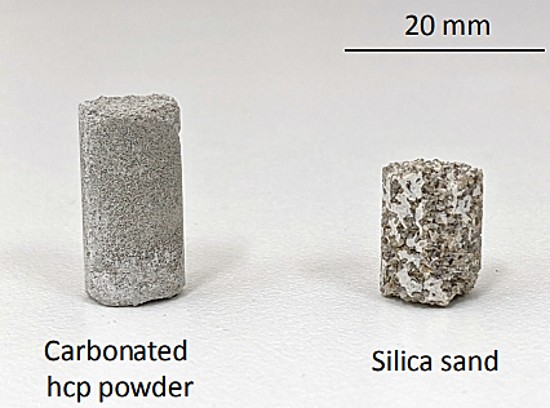Global greenhouse gas (GHG) emissions in 2020 totalled 50 billion tons when measured in carbon dioxide (CO2) equivalents. Cement and concrete are big contributors, as much as 7% of total emissions. Since the beginning of the 20th century, humans have produced hundreds of billion tons of Portland cement. Portland cement is by far the number one building material in global construction. But it is also a significant GHG contributor.
It is obvious that we can’t go without quality building materials for the buildings we live and work in, but we need to be looking at what we source and make more environmentally sound choices. That’s because we are in a race against time to decarbonize to keep Earth’s atmosphere from warming above 1.5 Celsius (2.7 Fahrenheit). That means we need to be changing cement, described as “the most mass-produced human-material on earth.”
The Institute of Industrial Science at the University of Tokyo has been working on a variety of formulations to discover one or more that can remove CO2 emissions from cement which is mostly made of sand. But surprisingly, the sand used to make it is in limited supply.
How could that be when you see an abundance of the stuff on beaches, dredged from the sea bed, and in deserts around the world? But all that sand isn’t uniform in consistency, and uniformity is critical to conventional cement to provide the right consistency for concrete.
What are the alternatives to sand? Cement experimenters have tried fly ash left over from coal-fired powerplants, and slag, the remains that come from the smelting of steel. The problem with both of these is a lack of consistency and uneven supply. Others have been experimenting with silica sand, glass beads, desert sand, and even simulated lunar regolith. The recipes they create combine these materials with alcohol and a catalyst to produce a binder that yields construction-grade concrete. And yet again, another project is using the crushed remains of demolished concrete structures.
There is nothing new about repurposing materials from older building sites. Humans have been doing this throughout history. The columns of Greek and Roman temples were looted from their ruins and used to grace the churches of the Medieval World. But in the 20th century we went through a period in which everything built had to come from newly sourced materials. Only recently have we saved the facades of older buildings to incorporate them into new construction.
Using crushed concrete from demolished sites when turned into a powder and mixed with a calcium carbonate solution is proving to produce a durable cement capable of withstanding heat and cold, high and low humidity, and the corrosiveness of carbonation which I have previously written about related to the recent collapse of the Champlain Towers in Surfside, Florida.
The findings of a group of University of Tokyo researchers, published recently in the Journal of Advanced Concrete Technology, describes the formulation and advantages of crushed concrete in cement. The authors of this new calcium carbonate concrete (CCC) estimate that if it were substituted in the production of cement, would reduce the total amount of GHG emissions in the atmosphere by 2%. CCC is a combination of concrete waste powder mixed with a calcium bicarbonate solution. In its formation it more closely resembles how limestone is naturally created here on Earth. It would be a carbon negative construction material and help us to mitigate atmospheric warming.









